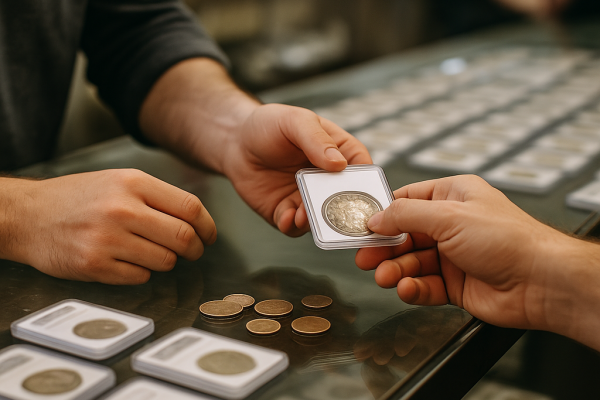From Gold Rush to Great Depression: Iconic US Coins That Outperformed the Stock Market
In a world of volatile digital assets, tangible investments like rare US coins offer a compelling alternative.
These numismatic treasures are not just historical artifacts; they are assets that have, over significant periods, demonstrated remarkable resilience and growth, often outperforming traditional stock market returns.
The journey of iconic US coinage through periods of immense economic upheaval—from the Gold Rush to the Great Depression—offers invaluable lessons. These coins represent concentrated wealth, artistic achievement, and a tangible link to America’s past, all contributing to their enduring value.
Keywell Collectibles is your trusted guide to understanding this unique investment landscape.
The Gold Rush Era: Manifest Destiny and Monetary Might
The 1848 California Gold Rush flooded the market with precious metal, leading to the minting of spectacular gold coins. The 1850 Liberty Head Double Eagle ($20 Gold Coin), for instance, represented significant purchasing power. While early stock markets were highly speculative, a well-preserved 1850 Double Eagle, originally $20, can now command tens to hundreds of thousands of dollars. This appreciation, driven by collector demand and finite supply, reflects a true outperformance.
Territorial Gold issues from private mints like Moffat & Co. or Kellogg & Co. further exemplify this. Struck due to official coin shortages, their extreme rarity and historical significance have seen their values skyrocket, often independently of broader economic cycles.
The Early 20th Century: Artistry Amidst Industrial Expansion
The “Golden Age of American Coinage” emerged in the early 20th century, producing some of the most beautiful coins ever struck. The 1907 High Relief Saint-Gaudens Double Eagle, designed by Augustus Saint-Gaudens, is a prime example. Its limited mintage due to striking difficulties made it rare from the start. While 1920s stocks saw gains before the 1929 crash, an original 1907 High Relief Double Eagle, costing $20, now fetches tens of thousands, with high-grade examples exceeding a million dollars—an astronomical return largely detached from market volatility.
Similarly, the low-mintage 1909-S VDB Lincoln Cent, initially worth one cent, now trades for hundreds or thousands of dollars, showcasing how true numismatic rarities can transcend general market performance.
The Great Depression: Tangible Security in Times of Crisis
The Great Depression (1929-1939) saw unprecedented economic collapse. During this period, tangible assets became paramount. President Roosevelt’s 1933 recall of gold coins inadvertently created legends like the 1933 Double Eagle. Minted but never officially released, a few escaped destruction, becoming among the world’s most valuable coins (one sold for over $18 million). This illustrates how certain coins, by their story, can become immensely valuable, entirely decoupled from a failing stock market.
Even more accessible Depression-era coins, like low-mintage Mercury Dimes or Walking Liberty Half Dollars, appreciated consistently over decades, driven by collector demand and precious metal content. They often outpaced the slow stock market recovery, providing a stable, tangible store of wealth during crisis.
The Enduring Appeal of Numismatic Investments
Rare US coins offer robust, long-term investment potential. Their value is driven by:
- Rarity: Finite supply vs. growing demand.
- Condition: Professional grading ensures value.
- Historical Significance: A tangible link to pivotal moments.
- Aesthetic Appeal: Artistry and craftsmanship.
- Tangibility: A physical asset providing security.
At Keywell Collectibles, we provide expert analysis and trusted guidance to help you acquire these iconic pieces that have proven their capacity to outperform, even when traditional markets falter. Consider the enduring legacy and performance of America’s most iconic coinage in diversifying your portfolio.



